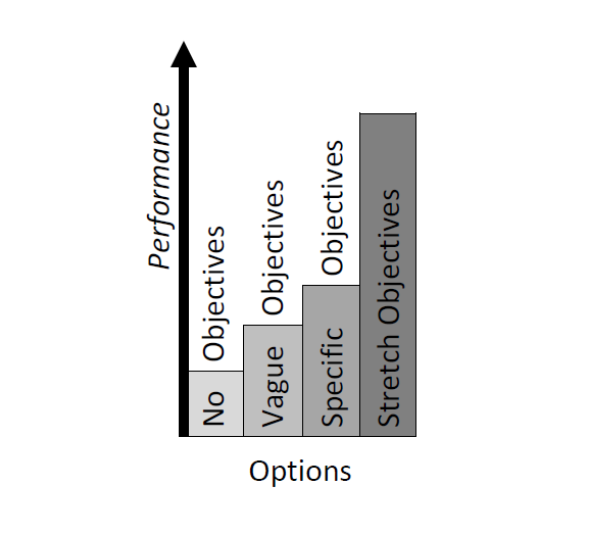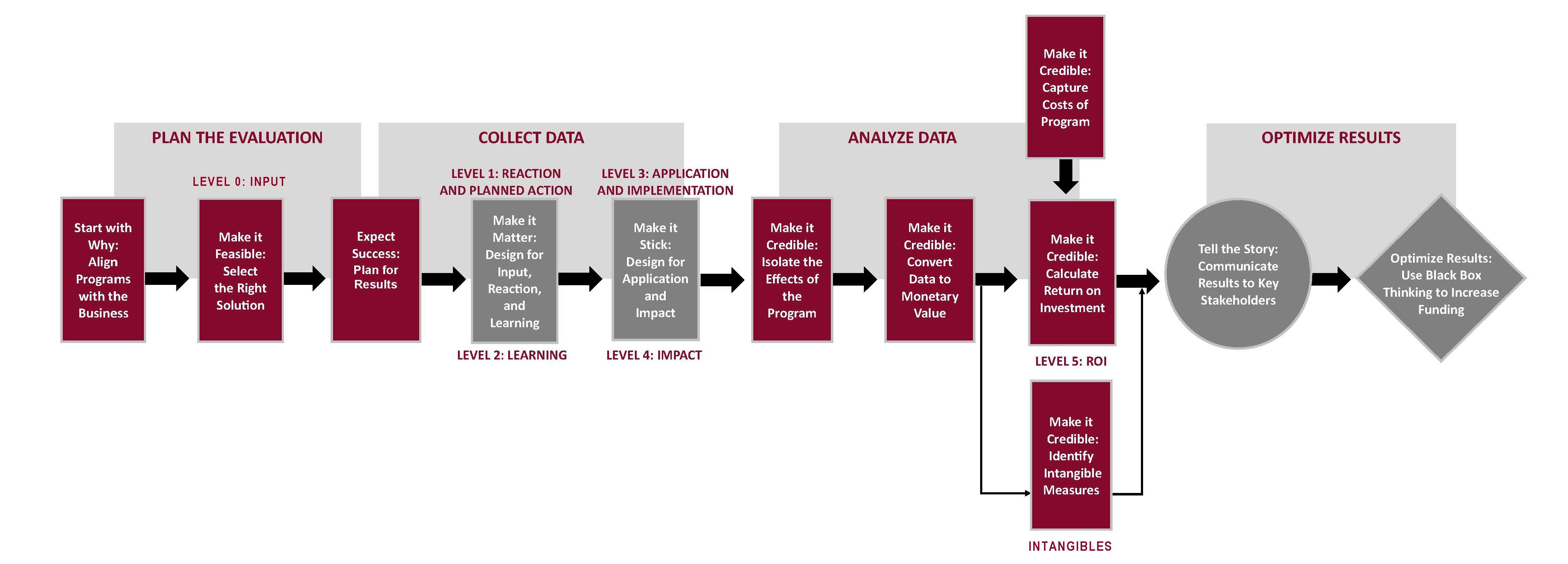Your cart is currently empty!
Jack J. Phillips and Patti P. Phillips
This article was originally published in the February 18, 2020 issue of Strategic HR Review.
Abstract
Great leaders deliver great results, including the impact they have in their organizations or spheres of influence. Without impact, leaders are ineffective. To achieve success in these turbulent times requires leaders to be effective in delivering on five levels of outcomes, including impact and ROI. The courageous leader is one who can deliver on all levels of outcomes in the face of many difficulties, challenges, and uncertainties in ambiguous environments.
The Dilemma
In a Sunday board meeting in London, in August 2019, John Flint, CEO of HSBC, was fired. The move came after months of concern over Mr. Flint’s leadership style and ability to take decisive action. Mr. Flint’s temporary replacement, Noel Quinn, brings pace, decisiveness, and ambition. Mr. Flint had a long, 30-year career with HSBC, moving through different departments and even working on trading floors across Asia, Europe, and the United States. However, before getting the CEO position, Mr. Flint told colleagues that he preferred not to be in the public eye and would become CEO out of a sense of duty rather than because he woke up each day wanting it.1
When faced with a problem, he liked to spend time considering it and would map out potential actions and outcomes on pieces of paper. He often sat in meetings taking in information with a pensive air, but without expressing his own views. Mr. Flint sought to make HSBC a more inclusive and pleasant place to work, developing a plan he called “Healthiest Human System” to encourage a better work-life balance for employees. His messages resonated with the bank’s staff, but his actions were short, and his results were disappointing. In February, six months before he was fired, HSBC’s full-year earnings were worse than expected, in part because costs were outweighing revenue growth. He didn’t deliver the impact.
In uncertain times, great leaders must be in place, stepping forward to take action to drive results. Because there is really no such thing as a natural-born leader, the organization must constantly develop current and new leaders. Leadership skills and leader behavior are shaped and molded over time, but also can be dramatically changed and improved with a variety of effective leadership development programs.
The perplexing issue about leaders and leadership development is the negative press it often receives. Articles in publications, such as McKinsey Quarterly, Forbes, The Wall Street Journal, and Harvard Business Review discuss the little return on investment in leadership development. Sometimes the focus is on an individual organization. A recent front-page article in The Sunday Telegraph in London, suggests that “Scotland Yard has Wasted £10 Million on Leadership Training.” The Metropolitan Police have been accused by its officers of “wasting” £10 million on a leadership training program as the crime rate soars. More than 10,000 officers and staff at the rank of sergeant and above attended five days of training. A spokesman said that the course cost £5 million a year over two years.2 The course – for which staff will be taken off duty for a total of more than 50,000 days of leader time – comes amid increasing crime levels, including more than 60 murders in 2018, with the monthly homicide rate overtaking that of New York. It also comes at a time when the Sunday Times reported in a front-page story, “Under 5% of all burglaries and robberies solved: New shock figures reveal failure of police.”3
The irony is the need for better leaders continues to grow. Global CEOs identified improved leadership development practices as a top-five human capital strategy, according to studies conducted by The Conference Board. In the Deloitte 2019 Global Human Capital Trends Report, 80 percent of executives rate leadership a high priority for their organizations, but only 40 percent think their organizations are ready to meet their leadership requirements.4
Dissecting the Problem
The root cause of this problem is not necessarily the content of leadership development programs or even the way that they are delivered, it is the definition of leadership success and the success of leadership development. Perhaps, its time to take a fresh look at this issue.
The Basics of Accountability
As in so many situations, a fresh look sometimes starts with a look into the past with some advice from well-known leaders. Here’s what two US presidents had to say about leadership success. John Quincy Adams once said, “Successful leaders inspire others to learn more, do more, and become more.” This logical conclusion is very insightful. It was Ronald Reagan who said, “The greatest leader is not necessarily the one who does the greatest things. He is the one that gets the people to do the greatest things.” These two quotes provide insight into the definition of leadership success. Let’s break them down into steps or levels.
- Inspiring others means that others are reacting to the leader based on their perception of that leader and the leader’s behavior. Reaction is critical, and without a positive reaction, the leader may not have much success. Reaction from others is the first level of outcome.
- Learning more means that we learn from our leaders and this is very important. These takeaways from the leader (information, ideas, behavior or skills) reflect what others are learning from the leader. Learning is the second level of outcome.
- Doing more means a leader must drive action. Leaders must influence others to take action. Without action, the leader has little influence. Let’s label that Application as the followers apply what they have actually learned from this leader. Application is the third level of outcome.
- Becoming more is the consequence of doing more. This is the impact of the leader, the consequences of application. To become more must be important to the individual, the leader, and the organization. Often, this information is fully reflected in the performance data of this individual and organization. Impact is the fourth level of outcome.
- Finally, there is one piece that John Quincy Adams didn’t mention, but it is there and it’s worth adding, Is this a worthwhile journey? Is the effort worth it? The best way to measure the worth of the journey is with the concept of return on investment (ROI), a financial term for comparing benefits to cost. The follower and leader are investing time. Are they receiving enough value from the leadership process to cover the investment in time? If a follower’s ROI is positive, there will be more success with application and impact, and it may continue and even increase. If the follower’s ROI is negative, there is little or no application and impact. They may disengage and withdraw. And from the organization’s perspective, are the efforts to develop a leader worth it? Are the monetary values from the impacts (monetary benefits) more than the cost of the leadership development program? ROI is the fifth level of outcome.
This concept is very simple, yet very powerful. Success doesn’t occur until impact is achieved. It suggests that the evaluation of leadership development should not stop at the learning level (to make sure that the leader has learned the competencies), or even at the leader behavior level (to make sure that the right behaviors are in place, application). Major leadership development programs should be evaluated at the impact level. What impact are the leaders having with their team through their actions, activities, and leadership behaviors? These impacts are typically output, quality, time, and costs, for the tangible measures, and teamwork, collaboration, engagement and stress as the intangible measures. Failure to evaluate at the impact level might be the problem for Scotland Yard.
Impact Measures are Everywhere
At the top of an organization, the success of a leader is clear. For a publicly traded business, the ultimate impact measure is perhaps market value, the stock price times the outstanding shares (market cap). The top leader makes a big difference, as illustrated in Figure 1 with a General Electric example.
Figure 1. General Electric Leadership Impact Comparison

For Gail McGovern, President and CEO of The American Red Cross, her number one measure is the amount of donations and operating revenues received (about $3.6 billion in 2018). The number-two measure is the percent of money spent that goes to humanitarian services and programs (about 91%).
The top leader for London’s Scotland Yard, a metonymy for the Metropolitan Police Service, is Cressida Dick, who has the title of Commissioner. Apart from the budget, her top priority is the crime rate in different categories and the second priority is the rate of solving crimes.
For Ambassador Fernando Arias, Director General of the Organization for the Prohibition of Chemical Weapons (OPCW), his number-one priority is to safeguard the Chemical Weapons Convention. His number-two priority is to protect the future of the organization by managing, developing, and operating it effectively and efficiently.
While these impacts are obvious for top leaders, similar impacts for lower-level leaders are also obvious to the leaders in the units they are leading. They are rolled up into and support the top leaders’ measures, and they are “business” measures.
Traditional View
Most organizations fail to define the success of leadership development at the impact level. We see this routinely in organizations as significant investments in leadership development are made. The story in The Sunday Telegraph criticizing Scotland Yard for wasting £10 million in leadership development is a classic example of missing the definition of success of leadership development. At a time when London is experiencing the highest crime rates in recent history and perhaps the lowest level of solving crimes, the public wants crime to be prevented and crimes to be solved. Those are the business measures and should be the impact of leadership development if leadership is the solution. These business measures would be the typical key performance indicators for those individuals who are in leadership roles within Scotland Yard. Yet, this program wasn’t linked to the impact measures. Its success was defined by city administrators and the leadership development provider as leader behavior developed from the program.
A Complete Success Profile
Leadership descriptions come in all sizes, shapes, and designs. Figure 2 puts it into perspective and explains the success levels of leadership development. This represents a chain of value that must exist for leaders to be successful.
Figure 2. Success Profile

Each level of success is needed for the next level to be successful. If it’s not interesting, engaging, and exciting, there will be little or no learning. Without learning, there is no application. Without application, there is no impact. Without impact, the ROI is negative (-100%).
In challenging times, a leader must be courageous from the standpoint of obtaining results on five levels. John Flint, the former CEO of HSBC, failed to provide the results at the impact level and although he was well-liked by the employees (reaction level), it cost him his job. In the Scotland Yard case, the challenge is to realize that leadership success does not rest with behavior. A leader’s success is connected to results and these days, with competition for funds and the scarcity of resources, the leadership development program must be worth it for the organization to invest £10 million. A courageous leader does not have the option of focusing on one of these success levels but essentially must operate on all levels of outcomes.
Why Doesn’t Leadership Development Deliver Business Value?
Although there are many reasons, here are the four big inhibitors to success.
Failure to Align with the Business
Few leadership development programs start with the end in mind expressed as a business need. If leadership and leadership development are defined based on the impact they deliver, then a leadership program should start with that impact in mind. Success improves significantly when a program begins with the end in mind. Research supports this, and certainly, well-known authors have suggested it. Stephen Covey defined this as the second habit in his best-selling book, The 7 Habits of Highly Effective People.®5 Simon Sinek also highlights this process with his book, Start with Why.6 The reality is that if you want business impact, then leadership development has to start with one or more business impact measures.
The Wrong Solution or at Least Not-the-Optimal Solution
Leadership development is one of those areas that should add value to almost any leader. The key word is should. When there is a problem in performance, there is an assumption that there is something the leader is not doing, so “let’s develop them.” The leadership development team is quite good at conducting a needs assessment to identify needed leadership skills or competencies. The challenge is to push this performance discussion to identify the business need and determine if and how leadership development can make that connection to the business need. It’s not that difficult. For example, in the Scotland Yard case, the leaders should identify one or two key performance indicators that need to improve, if they can be improved by the team, using the proposed leadership competencies. Chances are, most of the measures selected would be reducing crime or solving crimes.
Lack of Focus
Previously, the focus for leadership development has been what participants learn and what they do with what they learned. The focus now needs to be on the impact of the application. The best way to keep the focus is through objectives. In addition to having objectives at reaction and learning levels, application and impact objectives are critical.7 There has been a tremendous amount of work on the value of setting objectives, dating back to Dr. Edwin Locke Lock in the 1960s.8 A recent best-selling book placed more emphasis on the power of objectives.9
Figure 3 shows the conclusion from all this research. The first is that performance is enhanced by having vague objectives when compared to having no objectives. Although that seems logical and few would disagree with it, we rarely see leadership development objectives at the impact level. With no impact objectives, it is assumed that leader behavior will improve key business measures. A vague impact objective is better (e.g., reduce crimes in my area).
Second, the more specific the objective, the more the performance increases. This also seems logical, but unfortunately, most impact objectives are usually written in vague terms such as improving collaboration, teamwork, and retention. A specific objective is better, such as reduce robberies by 10% in six months.
Third, when stretch (but achievable) objectives are involved, even more performance is delivered. Leaders need to stretch themselves to make sure that they deliver great performance from their program. A stretch objective for leadership development should not be confused with performance review. This is a developmental program for a leader and the results should be separated from the performance appraisal process.
Figure 3. The Power of Objectives

Lack of Support
For major programs, objectives should be developed for reaction, learning, application, and impact and then provided to all stakeholders for them to drive the desired results. This starts with the designers and developers (who design for impact), facilitators (who teach impact), and owners of the program (who emphasize impact), and more importantly the manager of the leader, who must see that this leadership is necessary to drive business performance. This manager should role model, reinforce, support, encourage, and even require, the leader behavior and the impact.
Designing for Results
The dilemmas about the business connection to leadership development can easily be resolved by shifting responsibilities for the entire team to focus on results. Using design thinking principles, this approach designs for the results desired at the impact level and almost guarantees that the results will be there when measurements are taken.
Figure 4 shows the steps to take for this approach and measuring the success of leadership development programs at the impact and ROI level. This is a classic logic model (the United Nations labels it as the ‘Enhanced Logic Model’). It has sequential steps, and the options at each step are clearly defined in various books that support this approach.10
Figure 4. The ROI Methodology Model

For an example of how a leadership development program has been developed following these steps, please contact us, and we will send you a case study from a recent leadership book.11
References:
- M. Patrick, “Lack of Action Led to CEO’s Ousting,” The Wall Street Journal, August 6, 2019.
- H. Dixon. “Scotland Yard ‘wasting’ £10M on leadership training.” The Sunday Telegraph. June 3, 2018. 1 -2.
- J. Ungoed-Thomas, K. Shveda, S. Joiner, and D. Collins. “Under 5% of all burglaries and robberies solved.” Sunday Times. June 17, 2018. 1.
- E. Volini, J. Schwartz, I. Roy, M. Hauptmann, Y. Van Durme, B. Denny, J. Bersin. “The Deloitte 2019 Global Human Capital Trends Report,” Deloitte, 2019. https://www2.deloitte.com/content/dam/insights/us/articles/5136_HC-Trends-2019/DI_HC-Trends-2019.pdf
- S.R. Covey. The 7 Habits of Highly Effective People: Restoring the Character Ethic. New York, NY: Simon & Schuster. 1989.
- S. Sinek. Start with Why: How Great Leaders Inspire Everyone to Take Action. New York, NY: Penguin Group, 2009.
- J.J. Phillips, and P.P. Phillips. Beyond Learning Objectives: Develop Measurable Objectives That Link to the Bottom Line. Alexandria, VA: ASTD Press, 2008.
- E. Locke. “Toward a theory of task motivation and incentives.” Organizational Behavior and Human Performance, 1968.
- J. Doer. Measure What Matters: How Google, Bono, and the Gates Foundation Rock the World with OKRs. New York, NY: Portfolio/Penguin, 2018.
- P.P. Phillips and J.J. Phillips. The Business Case for Learning: Using Design Thinking to Deliver Business Results and Increase the Investment in Talent Development. Alexandria, VA: ATD, 2017.
- J.J. Phillips, P.P. Phillips, and R.L Ray. Measuring Leadership Development: Quantify Your Program’s Impact and ROI on Organizational Performance. New York, NY: McGraw-Hill, 2012.


























